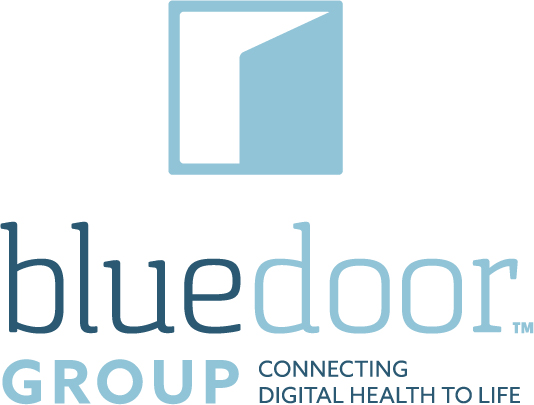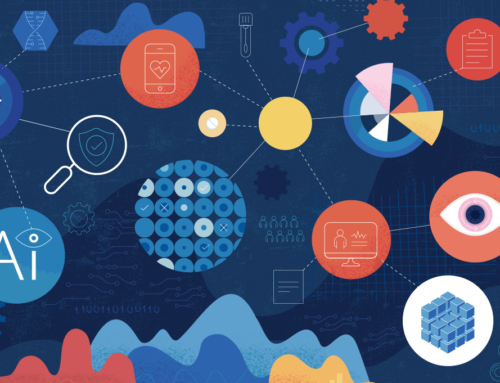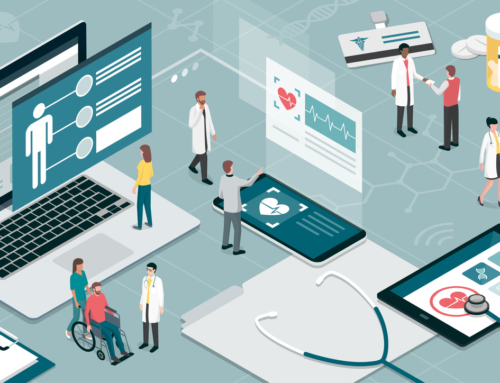April 27, 2023
In 1923, people were amazed by the advent of the motor car but it was still regarded by many as something of a novelty. It wasn’t until 1956, when President Dwight D. Eisenhower signed legislation funding the construction of the US Interstate Highway System, that the automobile could realize its full potential and transform the way we move around. The promise of newfound technology always opens up a world of possibility and opportunity, but sometimes it takes a while for the support infrastructure to catch up and for people’s attitudes and behaviors to change.
Well, as my colleague Michael Levy is often heard proclaiming, it’s the equivalent of 1923 in the 21st century and what once seemed the stuff of dreams – including artificial intelligence, augmented and virtual reality, and the metaverse – is now coming to fruition. And yet, while digital health technology continues to advance exponentially (and medical knowledge doubles every 73 days), it is important to take stock and learn from the lessons of the past. That is, in order to move forward, sometimes you have to look back and hindsight is usually 20:20.
Throughout my eclectic career, the future has usually been clear. Not in a Dumbledore, master wizard sort-of-way, but based on a deep understanding of market trends and human behavior. Many of our predictions at Bluedoor, especially around the advancement of digital health, have eventually been proven “spot on” as we Brits like to say. They just needed the environment or the infrastructure or people’s attitudes to be ready to receive them. For those clients that listened (MindCare, Hippo Technologies, Medable, Castor, Infermedica to name just a few), the journey to success was effectively accelerated. So let’s go back and explore the past and five predictions that could have changed the world earlier. Because sometimes the past is the most prescient path to the future.
1999 :: Prediction: Telemedicine is the future of health
Today, telehealth or telemedicine is fairly ubiquitous, due largely to the pandemic, but it’s nothing new. The Jetsons famously predicted telehealth for viruses more than 60 years ago, and early iterations in the 1970s centered around the British army providing remote care to troops in combat. Solutions have certainly come a long way in the last decade, but despite rapid advancement and broad acceptance, telehealth as a strategy embedded throughout the continuum of care was largely ignored by major health systems.
In 1999, I was living in Japan when I was approached by Tomen, one of the nation’s largest general trading companies. They had built a global telecoms network and were looking to promote the use of telemedicine around the world. I immediately saw this platform as the future of healthcare delivery, but they struggled to gain traction with western healthcare systems and soon shelved the project. 15 years later in 2014, I met with some folks from a little known telehealth company based in Florida called Teledoc who were slowly building up a head of steam (although at that time, 99 percent of their clinical consultations were by phone rather than videoconference). Today, Teledoc generates more than $2.5B in annual revenue and conducted 18.5M virtual visits in 2022. The pandemic forced health systems to adapt and adopt a virtual care delivery model. I should have listened to my gut and invested when I had the chance!
2007 :: Prediction: The rise of consumerism in healthcare
Two of the biggest macro-economic forces affecting healthcare today are consumerism and value-based care. The concepts are inextricably linked where consumerism emphasizes the importance of informed and empowered patients who are involved in their healthcare decisions, while value-based care focuses on improving quality and reducing costs by incentivizing healthcare providers to deliver better outcomes for their patients. Synergistically, both concepts place a greater emphasis on consumer experience and engagement, positive outcomes, and on prioritizing transparency and accountability.
When I was working with Humana Europe as their Chief Marketing Officer in the mid-to late-2000s, I co-authored a white paper with my former colleague Tom Granatir titled “When patients become consumers”. I spent the next few years having debates with clinical colleagues about the “outrageous” use of the ‘C-word’ (consumer) in healthcare, the natural default position of a largely parochial system that prefers to see people as ‘patients’ with a problem to fix. Today, increased consumer choice is forcing healthcare organizations to focus on delivering a seamless customer experience, across both the physical and digital worlds. The launch of the iPhone just a few months later heralded the beginning of this new age of consumer choice and empowerment, that traditional healthcare systems are now struggling to keep up with. If only they had implemented my strategy built around the concept of PRM or Patient Relationship Management (PRM) 15 years ago!
2012 :: Prediction: Experience is the silver bullet
In 2023, patient experience has become a driving force behind healthcare engagement and satisfaction. Consumers today are seeking a more personalized approach to healthcare – they want to be treated as individuals with unique needs and preferences, rather than just another number in a crowded system. Crucially, patients today have more choice when it comes to healthcare providers, and they are more likely to switch providers if they are dissatisfied with the care they receive. This has led healthcare providers to focus on delivering a positive patient experience in order to attract and retain patients.
In 2013, I worked with my friends at healthcare marketing agency Lift to launch a toolkit for patient engagement based around design thinking principles. At the time, design thinking in healthcare was a novel concept struggling to gain traction. People paid lip service to “patient-centric care” but many were finding it challenging to operationalize. For many health systems, the obvious solution to low patient volumes was to put physicians’ faces on billboards, and so my mantra that “marketing is not a silver bullet, but patient experience is” tended to fall on deaf ears. Fast forward a decade, and today patient experience informed by human-centered design has become a key priority for health system CEOs and remains a driving force behind healthcare engagement and satisfaction, as they wake up to the fact that “providing consumers with the experiences they increasingly expect and demand at every stage of the healthcare journey could substantially improve care and cost outcomes.” (see this recent McKinsey white paper on the topic.)
2014 :: Prediction: Chatbots and AI will transform the healthcare experience
Over the last decade, chatbots have emerged as liaisons between consumers and providers acting as a concierge to the digital world. Particularly in healthcare, AI-powered chatbots have become a powerful tool for improving patient engagement, providing personalized health advice, and delivering clinical decision support. In addition to supporting patients, chatbots are also being used to streamline administrative tasks and improve the efficiency of healthcare systems. They have been deployed to schedule appointments, answer common questions, and provide information about healthcare services and providers. The rapid rise of chatbots in healthcare is in part due to the pioneering work we did with Dr Roger Gould, the father of digital therapy, and IBM Watson, as we spent a year training Watson in the art of psychodynamics and talk therapy. Even for IBM, this was pushing the boundaries of what was possible from an artificial intelligence perspective, and so the project was eventually shelved as the limitations of the technology at the time failed to deliver a true human-like experience. But with the recent advances in generative AI, it’s gratifying to see chatbots gaining utility and ubiquity across the healthcare space, and at last approaching their potential to improve access, reduce administrative burden, increase efficiency and lower costs.
2015 :: Prediction: The rapid rise of digital health
When COVID-19 reared its ugly head, the world changed overnight. The healthcare industry felt the massive burden of dealing with a global pandemic as well as every other sickness and malady afflicting patients. Consequent to stay-at-home orders and a complete upheaval of life as we knew it, the largely latent digital health industry was accelerated to the forefront of many health system’s strategic priorities with an expedited evolution and adoption track. It was an iterate-as-you-go type of situation and many organizations were implementing solutions on the fly.
Today, if you ask someone what digital health is they can give you a laundry list of answers, but prior to the pandemic it wasn’t that simple. In fact, we spent the better part of five years trying to educate people on what digital health even meant.
In 2015, when Michael and I landed in North Carolina, fresh off our digital health experience with IBM Watson, we wanted to plant a flag in the ground to raise awareness of the value and benefits of digital health and so we launched Bluedoor, a full-service growth and innovation agency for healthcare and life science companies. Shortly afterwards, we established what is now known as the Digital Health Institute for Transformation (DHIT), a non-profit education and research institute supporting organizations and communities through the process of digital transformation.
Eight years and a global pandemic later, digital health is the norm, not the exception. It is the #1 priority area for investment by health systems in 2023 and the future looks even brighter for digital health providers – especially when you knew all along.
If you offered people the opportunity to have a superpower, many would wish they could see into the future. Here at Bluedoor, we have a proven track record for doing just that, through foresight, insight and cross-sight. Just ask our current and former clients, many of whom have leapfrogged the competition to lead their respective industry sectors. So, if you want to get ahead of your competitors and jump the next S-curve, let’s chat!
Lee Phillips, CEO and Cofounder of Bluedoor, was recently recognized as a Top 100 Innovator & Entrepreneur by Top 100 Magazine.










